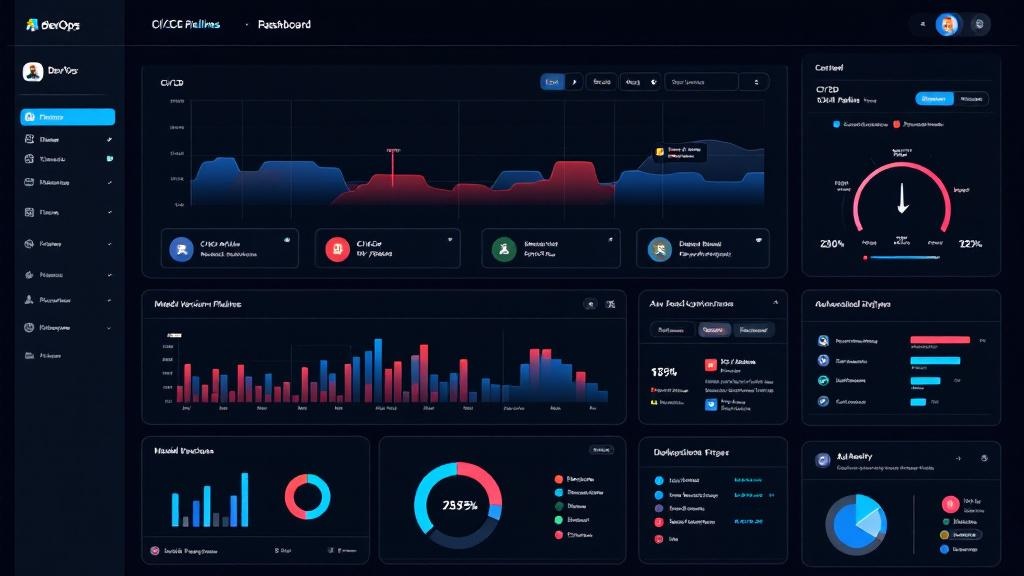Introduction
As artificial intelligence continues to revolutionize every major industry, the need for robust and scalable AI infrastructure has never been more critical. The success of modern AI tools depends not only on sophisticated models but also on the backend systems that support their development, deployment, and scaling. Whether it’s building intelligent agents, domain-specific assistants, or automation tools, developers must rely on a solid infrastructure that ensures performance, flexibility, and security.
This blog explores the essential components of scalable AI infrastructure and why it plays a foundational role in powering today’s most innovative AI tools.

Cloud Computing and AI Scalability
Cloud infrastructure serves as the foundational pillar of scalable AI development. Providers like AWS, Google Cloud, Microsoft Azure, and others enable developers to leverage massive compute resources without the overhead of managing physical data centers. This flexibility accelerates innovation and brings down costs associated with infrastructure management.
- Elastic Compute: Developers can dynamically provision high-performance GPUs or TPUs for intensive training and inference tasks, ensuring optimal resource utilization.
- Distributed Training: Sophisticated models can be trained across multiple nodes or clusters, significantly reducing training time and enabling experimentation with larger datasets and architectures.
- Auto-Scaling: Applications that support real-time users, such as chatbots or recommendation engines, can automatically scale based on demand, ensuring uninterrupted performance and cost-efficiency during both peak and idle times.
Furthermore, cloud-native tools like Kubernetes for orchestration, Docker for containerization, and Terraform for infrastructure-as-code streamline deployment and scalability. These technologies facilitate consistent and automated operations across various environments, reducing friction in managing AI pipelines at scale.
Building scalable AI tools begins with understanding how large language models operate, which is explained in How Does Large Language Models Work.

Data Infrastructure and Pipeline Management
Data lies at the heart of any AI system, and scalable infrastructure ensures it’s managed efficiently and reliably. Proper data handling boosts model quality, reduces biases, and enhances reproducibility.
- Data Lakes and Warehouses: Robust platforms like Snowflake and Amazon Redshift offer scalable and high-speed access to both structured and unstructured data, supporting the ever-growing demand for training and inference.
- ETL and ELT Pipelines: Automated tools such as Apache Airflow, Prefect, and dbt enable seamless data transformation, cleaning, and loading, essential for feeding clean datasets into machine learning models.
- Real-Time Data Processing: Technologies like Apache Kafka and Apache Flink support streaming data use cases, making them indispensable for fraud detection, real-time analytics, and recommendation engines.
Data governance frameworks, versioning systems like DVC, and automated validation tools help maintain data integrity, facilitate audits, and ensure compliance with organizational and legal standards.
The evolution of AI tools into full-fledged platforms is supported by concepts found in The Rise of Personalized AI How Custom GPTs Are Shaping Industries, where custom solutions drive scalability.

MLOps and Continuous Integration/Deployment (CI/CD)
MLOps bridges the gap between machine learning development and operations, allowing teams to reliably deploy, monitor, and iterate on AI models in production.
- Model Versioning: Platforms such as MLflow, Weights & Biases, and DVC provide tools for tracking experiments, managing datasets, and comparing model performance.
- CI/CD for ML: Continuous deployment workflows with GitHub Actions, GitLab CI/CD, or Jenkins ensure that updated models are automatically retrained, tested, and deployed with every significant change in data or code.
- Monitoring and Drift Detection: Tools like Seldon, Evidently, and Fiddler offer real-time monitoring and alerting when model predictions deviate due to data drift or unexpected input changes.
These practices foster reproducibility, reduce deployment risks, and ensure AI solutions maintain their performance over time. An efficient MLOps pipeline is crucial for scaling AI solutions across multiple teams or use cases.
Scalable infrastructure often includes reinforcement learning systems, as discussed in The Power of Data Scaling in Reinforcement Learning from Human Feedback, which help AI tools adapt over time.

Modular Architectures and APIs
Building AI tools using modular design and API-first approaches enhances scalability, reusability, and extensibility, making it easier to serve a broader range of users and industries.
- Microservices Architecture: Decoupling components like NLP, image processing, or search algorithms allows each module to evolve independently while still functioning as part of a larger tool.
- Standardized APIs: RESTful, GraphQL, or gRPC interfaces ensure interoperability across various platforms, including mobile apps, web services, and enterprise systems.
- Plugin Ecosystems: Supporting third-party extensions via plugin systems promotes a developer community, adds flexibility, and shortens the development cycle.
This modularity empowers developers to innovate quickly while retaining the robustness and reliability required for enterprise deployments.
For businesses looking to expand their operations using AI, How AI-Powered Tools Can Help You Scale Your Business Faster offers valuable strategies that align with infrastructure growth.

Security, Privacy, and Compliance
Handling sensitive data responsibly is essential for trust and legal compliance. AI infrastructure must therefore prioritize security from the ground up.
- Data Encryption and Access Control: Encryption at rest and in transit, role-based access management, and detailed audit trails ensure secure data handling.
- Compliance with Regulations: AI platforms must be designed to comply with frameworks such as GDPR, HIPAA, and CCPA. Tools that track data lineage and user access help meet these compliance demands.
- Secure Model Deployment: Technologies like TensorFlow Extended (TFX), NVIDIA Triton, and container security solutions ensure models are deployed in isolated environments with limited exposure to threats.
By building privacy and compliance into the infrastructure, organizations not only protect their users but also future-proof their AI solutions against changing regulatory landscapes.
The foundation of reliable and scalable AI tools also relies on retrieving accurate real-time data, a technique explained in What is Retrieval-Augmented Generation (RAG) Explained.

Conclusion
Scalable AI tool development doesn’t begin and end with building better models—it requires a thoughtful, comprehensive infrastructure that supports the entire lifecycle, from data collection and training to deployment and monitoring. As businesses increasingly rely on AI to power their tools and services, the importance of investing in cloud infrastructure, MLOps practices, modular design, and data security becomes essential.
Platforms like GEE-P-TEE are great examples of how custom GPT-powered tools can be built and scaled efficiently using modern AI infrastructure. With the right foundation, developers and companies can unlock the full potential of AI, delivering smarter, faster, and more resilient solutions for every industry.

Leave a Reply